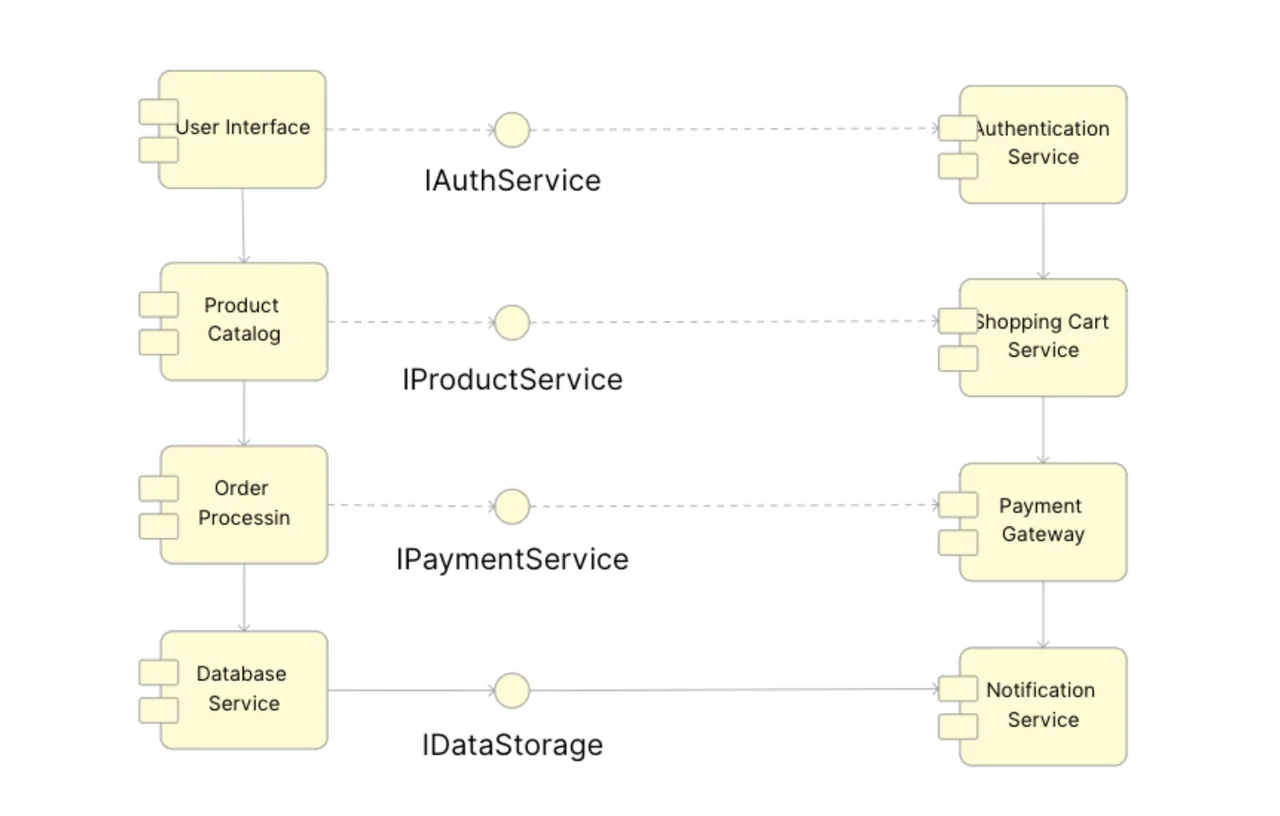--- title: "Component Diagram" author: "AFFiNE" tags: Diagram Template slug: component-diagram-template created: 2025-03-01 description: "Use our Component Diagram template to view and record your software's building elements. You may easily adjust connections, interfaces, and dependencies to create a full architectural plan that improves communication across development teams. Begin mapping your system components for better design decisions now!" publish: true template: [](LinkedPage:u481AUeCAPbbTLldTZOGV) ---  ## Component Diagram: Your Guide to Visualizing Software Architecture A Component Diagram is an important UML diagram that helps software engineers and architects see how different pieces of a system interact. Our customisable template allows you to describe system components, interfaces, and dependencies in a simple visual style, making it simpler to convey architectural decisions and comprehend complicated system architectures. ## Why Use a Component Diagram? ### Enhanced System Design Clarity Component diagrams give a high-level overview of your software architecture by dividing large systems into manageable, logical pieces. This visual modeling method enables team members to immediately grasp how various system components interact, hence boosting architectural comprehension and allowing better design decisions. ### Improved Communication Among Development Teams By detailing component interfaces and relationships, these diagrams serve as a common visual language that bridges the gap between technical and non-technical stakeholders. The diagram represents the component-based development strategy, which helps guarantee that everyone knows how system components link and perform together. ### Simplified System Maintenance and Evolution A well-structured component diagram illustrates the links and dependencies in your software architecture, making it simpler to recognize potential consequences when modifications are required. This visual depiction of your system structure enables more effective maintenance, helps to eliminate regression concerns, and allows for smoother system progression over time. |Title| |---| |Column 1|Title| |---|---|
title: "Component Diagram"
author: "AFFiNE"
tags: Diagram Template
slug: component-diagram-template
created: 2025-03-01
description: "Use our Component Diagram template to view and record your software's building elements. You may easily adjust connections, interfaces, and dependencies to create a full architectural plan that improves communication across development teams. Begin mapping your system components for better design decisions now!"
publish: true
template: Component Diagram

Component Diagram: Your Guide to Visualizing Software Architecture
A Component Diagram is an important UML diagram that helps software engineers and architects see how different pieces of a system interact. Our customisable template allows you to describe system components, interfaces, and dependencies in a simple visual style, making it simpler to convey architectural decisions and comprehend complicated system architectures.
Why Use a Component Diagram?
Enhanced System Design Clarity
Component diagrams give a high-level overview of your software architecture by dividing large systems into manageable, logical pieces. This visual modeling method enables team members to immediately grasp how various system components interact, hence boosting architectural comprehension and allowing better design decisions.
Improved Communication Among Development Teams
By detailing component interfaces and relationships, these diagrams serve as a common visual language that bridges the gap between technical and non-technical stakeholders. The diagram represents the component-based development strategy, which helps guarantee that everyone knows how system components link and perform together.
Simplified System Maintenance and Evolution
A well-structured component diagram illustrates the links and dependencies in your software architecture, making it simpler to recognize potential consequences when modifications are required. This visual depiction of your system structure enables more effective maintenance, helps to eliminate regression concerns, and allows for smoother system progression over time.
| Title |
|---|
| Column 1 | Title |
|---|